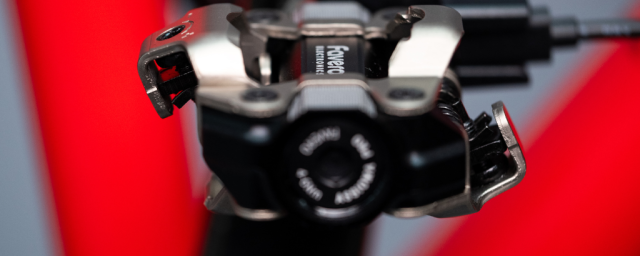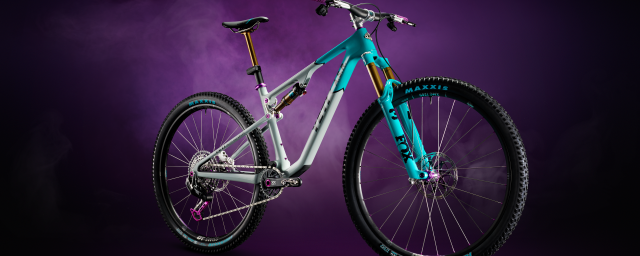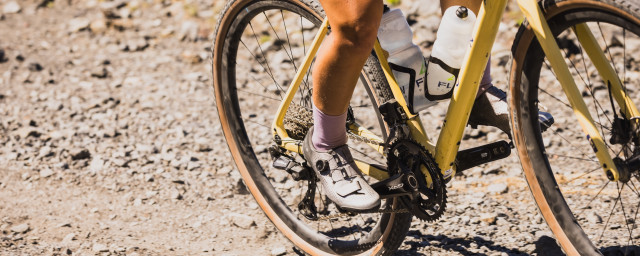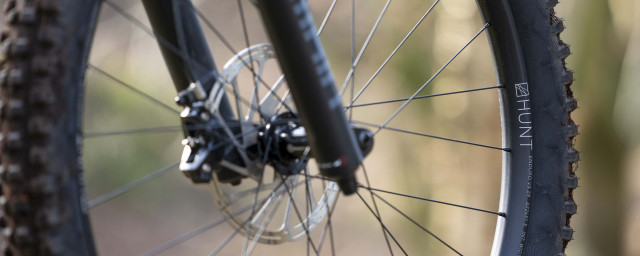How does tyre sealant work?

Converting your tyres to tubeless is one of the best upgrades you can make for the money, and not all tubeless setups are complete without sealant. The best tubeless sealant is an important component to any tubeless tyre setup, so here, we'll dive into the technology behind it and explain how it works, and why you need it.
- Tubeless mountain bike tyres - everything you need to know
- Is it worth converting your mountain bike to tubeless?
- Tubed vs tubeless tyres – everything you need to know
To achieve a tubeless setup, you don't need tubeless sealant. Applying tape to a rim and inflating a tubeless-ready tyre using a tubeless-specific valve can work perfectly fine. However, air can seep through the carcass and without sealant, the smallest of punctures can end your ride.
One of the primary reasons sealant is so useful is that it coats the inside of the tyre and any holes or gaps in tubeless rim tape, resulting in a more airtight seal. Another serious benefit is that tubeless sealant can repair punctures without you even realising. When a tyre is punctured, the pool of sealant runs over the hole where the liquid reacts with the air, dries and fills the hole. Some sealants use particles suspended in the fluid to seal larger holes.
However, tubeless sealant isn't the be-all and end-all for puncture repair – it only works to a point. If a hole is too large or situated in the side wall, you'll likely need a tubeless tyre repair kit to fill the hole.
Why do I need sealant?
Off-road riding terrain is nearly infinitely variable. All those rocks, roots and loose bits of shale are impossible to model and account for, even if tyre designers use the most powerful engineering software. That means potential puncture risks are everywhere.
Thorns are a classic puncture culprit, but for mountain and gravel riders who ride off-road, they're an even more common enemy. Less visible than sharp rocks, thorns can become a veritable puncture nightmare, overwhelming a tyre’s ability to hold air.
Mountain and gravel bike riders are susceptible to punctures due to the diversity and texture of terrain surfaces they roll over and the relatively low tyre pressures they run to enhance grip and ride comfort. When descending a trail at speed, terrain impacts caused by rocks and roots can pinch flat your tyre by squeezing it against the rim hooks (the bits that keep your tyre's beads in place). This is one area where tubeless tyre sealant works its chemical magic: flowing to that pinch flat hole while rolling along and sealing it by reacting with the air.
Although most sealants are latex-based, the formulations also contain microparticles and crystals, which coagulate to help fill a puncture while rolling along as the liquid dries to form the seal instead of merely emptying all fluid onto the trail.
Rim shape and sealant
Not all rims are similar in shape and the diversity of rim profiles and structures triggered much frustration in the early days of tubeless tyre adoption. Some tyre brands and rims were enormously frustrating to try and seat, not to mention seal, due to large variations in tyre and rim standards.
In recent years, those standards have gotten much better, plus advancements in rim bed designs with rim bed locks and similar techy goodness have led to tubeless setups that are easier to set up.
Sealant and the issue of clogged valves
The tubeless tyre system and its integrity regarding airtightness and puncture resistance rely on appropriate rim design, correct rim tape, sealant and valves. Incorrectly configuring any of these will become the system’s weakness and leave you with the frustration of a tyre that doesn’t hold your desired air pressure as intended.
Valves can become sticky, constricted or entirely blocked by tyre sealant. It’s one of those annoyances of legacy valve design, which has not always kept trend with the fluid realities of tubeless tyre system requirements.
Investing in a pair of premium tubeless valves isn’t expensive (£20 to £30), and these valves last a long time. Some feature machined slots at the valve base, which are designed to help sealant flow when injected through the valve stem with a tyre insert installed.
Better still, brands such as 76 Projects, Reserve and Stans' No Tubes have released clog-free valves onto the market. They're a little pricier than regular Presta options and fiddlier to install, but they're far less prone to clogging thanks to a much more open design than your average Presta valve.
How long does sealant last?
Like any advanced mountain or gravel bike technology, sealant isn’t maintenance-free. Over time, sealant can thicken and form into clumps. Once your sealant has ‘aged’ and changed its form into small clumps instead of a responsive fluid, it won’t seek and seal pinch flats or other puncture issues.
Sealant longevity depends on several factors, including riding frequency and temperature. But for most mountain bikers and gravel riders, it’s best to check the sealant every three months and replace it every six. However, this is specific to the manufacturer, so check the bottle before breaking into the tyre. But a good rule of thumb is that if it's still in liquid state, it's good. If it's lumpy, get that sealant changed.
It's worth noting that the use of CO2 canisters, chosen to inflate and seal a tyre after a puncture, affects many tubeless sealants. When activated and burst into a tubeless setup, an endothermic reaction takes place, where both the canister and CO2 get incredibly cold and this can freeze the sealant. Some brands offer a sealant that is CO2 friendly, where this effect shouldn't happen. Either way, remember that CO2 inflation is a get-me-home measure at best and should be replaced with bog-standard air because CO2 will also seep through the tyre's construction.
What about sealant and environmental stewardship?
A lot of mountain bikers and gravel riders are environmentalists by implication. Without pristine forests and healthy wilderness areas, there’s no rewarding singletrack or ranging weekend adventure rides. But is the sealant inside your tyres toxic to the environment?
For riders who are deeply aware of their environmental impact, spilling sealant from a tyre that has squirmed off a rim during a high-speed cornering is messy and alarming. Most sealants are latex or synthetic, with other additives kept secret by manufacturers. Latex, especially in its liquid form, will degrade reasonably quickly.
Most of the industry uses a variety of biodegradable particles in their sealant formulations , but there are alternatives for those riders who want to use an environmentally conscious sealant. Some brands have invested in formulations that offer all the required product stability and attributes without the perceived toxicity of traditional latex-based sealants and without using ammonia, a common ingredient of tubeless sealants.













4 comments
It "reacts with the air." Quite the in-depth chemistry lesson.
Bogies! It forms bogies that block holes in the tyre.
Doesn't say how sealant works???
Doesn't say how sealant works???